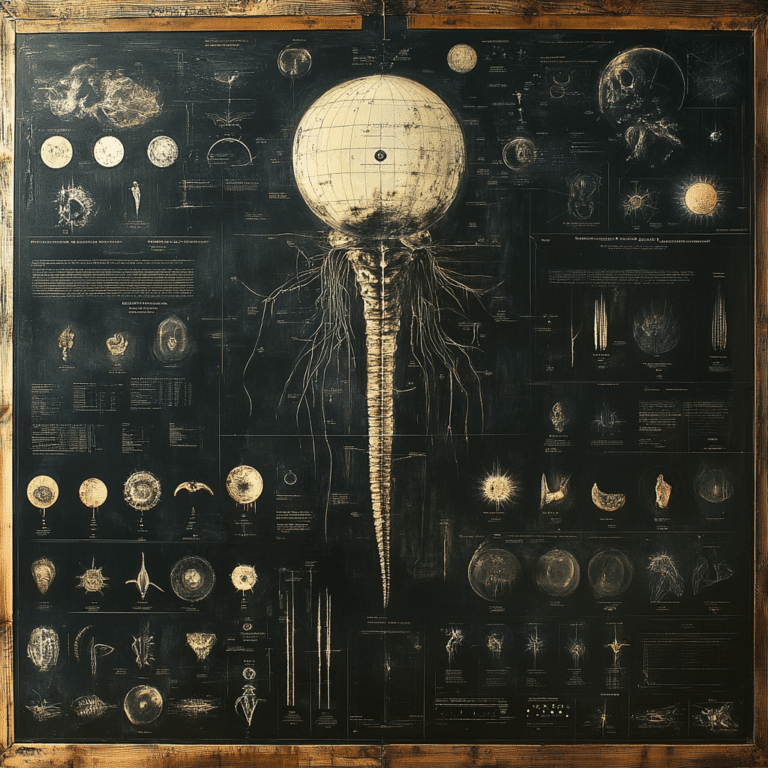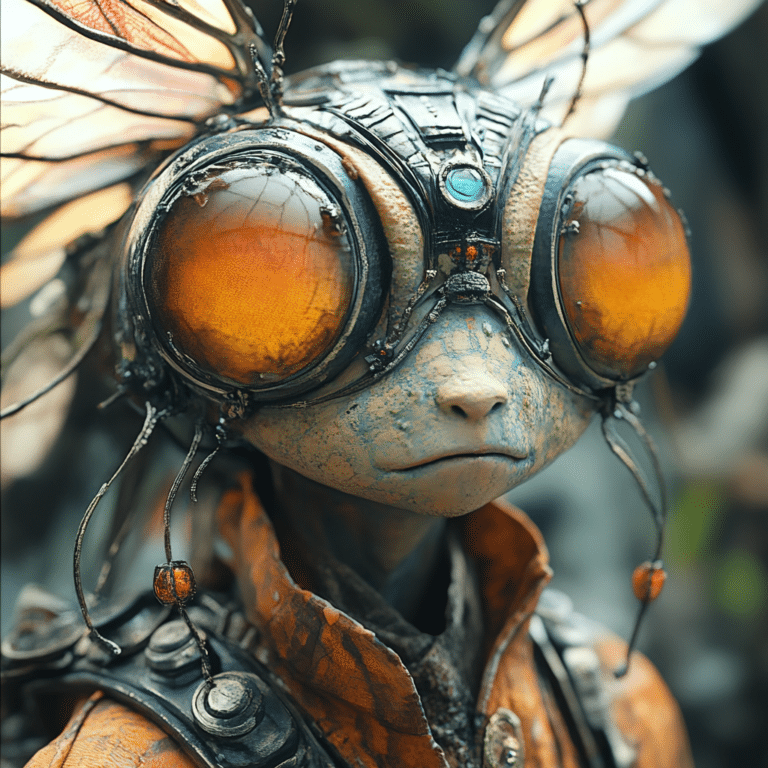Advancements in artificial intelligence (AI) are evolving at an unprecedented rate, leading to automations and creations that can both amaze and bewilder us. A prime example is the website “This Person Does Not Exist,” which generates lifelike images of individuals who never actually existed. This technology raises essential questions about the future of AI, including its implications for identity, privacy, and our perception of reality.
As we delve into the broader landscape of AI, it becomes clear that “This Person Does Not Exist” serves as more than just a curious online gimmick. It opens the doors to discussions about ethics, identity, and the very fabric of human interaction in a world teeming with synthetic constructs. How do we navigate a future where technology can create a persona that feels incredibly real yet is entirely fabricated? And what does this say about our understanding of authenticity?

7 Fascinating Insights on ‘This Person Does Not Exist’ and Its Broader Implications

1. A Glimpse into Deep Learning
At the heart of “This Person Does Not Exist” lies Generative Adversarial Networks (GANs), a type of deep learning architecture. GANs consist of two neural networks—the generator and the discriminator. While the generator creates images that seem real, the discriminator checks their validity, resulting in incredibly lifelike representations. This synergy reveals the capability of AI to mimic human features and expressions. It’s like looking in a mirror but realizing that the reflection isn’t you at all.

2. The Evolution of Lifelike Representations
Beyond mere photographs, companies like Synthesia are pushing the envelope by creating hyper-realistic avatars that can engage in conversations and even present as virtual influencers. These avatars represent brands or trends without being physically present, capable of delivering marketing messages that resonate. Brands, such as Procter & Gamble and Unilever, are implementing these AI avatars in their advertising campaigns, allowing them to craft relatable yet fictitious representatives.
3. Ethics Surrounding AI-Generated Content
The ability to fabricate a person that doesn’t exist brings up serious ethical questions. For example, imagine answering someone who called you, asking, “who called me from this phone number?” only to find out it was a voice clone, a deceptive deepfake. Such manipulations can mislead individuals and sow distrust in everyday interactions. As these technologies improve, our sense of reality may blur, complicating the fabric of personal and digital relationships.
4. Impact on Social Interactions and Identity
As we embrace this technology, it alters how we perceive identity online. Social media platforms like Snapchat and Instagram allow users to transform their appearances with filters. This technology leads to a fluid definition of who we are and complicates relationships in unexpected ways. The rise of virtual influencers, like Lil Miquela, challenges traditional definitions of companionship, making us question what it means to connect authentically.
5. Commercialization and Market Value
AI-generated personas represent a lucrative avenue for market engagement. Brands leverage these personas to create advertisements—entirely authentic-seeming figures that embody customer characteristics without the complexities of working with real actors. This is where brands, often seen in Skincare like Procter & Gamble or Household Goods such as Duluth Trading Co., create nuanced connections with their audience. But this fine line between genuine and AI-generated endorsements raises questions about consumer trust.
6. Privacy Implications and Location Tracking
With the rise of AI technology, concerns about privacy surge. We often ask AI tools like “what is my current location?” and “what is my zip code?” without realizing that such queries contribute to our digital footprint. These seemingly harmless interactions can enable AI to gather extensive profiles about users, making privacy a pressing issue. In a world where marketers and advertisers often track our preferences and habits, balancing personalization against potential invasions of privacy becomes vital.
7. Potential for Personalized Experiences
Corporations are intensely investigating AI’s power to create distinct customer experiences. By utilizing AI models that can simulate conversations, companies can provide services designed for each user, asking engaging questions like “what’s my location?” Personalized experiences can lead to enhanced customer satisfaction, yet they can also feel invasive. As AI personalizes our services, we must grapple with what’s acceptable in our digital interactions.

Exploring the Future Landscape of AI
The future of AI, exemplified by “This Person Does Not Exist,” is multifaceted, offering groundbreaking possibilities along with considerable challenges. We’re looking at a landscape marked by personalized marketing, ethical quandaries surrounding authenticity, and shifts in the very essence of human connection. As we move forward, it’s crucial to balance the remarkable capabilities of AI with a vigilant approach to its impact on identity and societal norms.
In this evolving narrative, responsibility lies with developers, consumers, and policymakers alike to craft a future where AI assists us rather than confuses us. As we look towards this AI-dominated horizon, let’s harness these innovations to create a space that celebrates authenticity and upholds trust. As we collectively ponder questions like “who called me from this phone number,” the potential for AI to enrich our understanding and experiences may be just beginning.
As we continue this journey, it’s clear: the lines between what is real and what is AI-generated will only continue to blur. Will we embrace the unknown, or will we retreat into the familiar? How we navigate this dynamic will define our relationship with technology for generations to come.

This Person Does Not Exist: Fun Trivia and Interesting Facts
The Magic Behind the Faces
Isn’t it wild that with just a few clicks, you can see faces of people who don’t actually exist? “This person does not exist” uses a generative adversarial network (GAN) to create lifelike images of non-existent individuals. This technology is not just about creating business opportunities or competing in the art community; it’s reshaping our understanding of AI and what it means to be human. For a deeper dive into unique financial avenues, check out how high risk merchant Highriskpay.com works within the digital framework of an evolving economy.
As we explore this fascinating concept, think about the cultural impact—it raises all sorts of questions! How does this kind of technology play into social media and branding? Imagine utilizing such hyper-realistic images in advertising or even in animations. Speaking of unique identities, have you heard about Annie Gonzalez? Her contributions to creativity blend the lines between reality and fiction, much like what “this person does not exist” showcases.
The Social Implications
Now, let’s talk about implications. With advancements like “this person does not exist,” we might face questions regarding authenticity and trust. Many industries, like advertising and networking, could be rocked by this tech. Additionally, as we approach moments of cultural expression—say, Ramadan Mubarak—these images can serve as a reminder to appreciate the real connections in our lives. These avatars might seem innocuous, but they challenge our ideas of reality and societal norms.
Did you know that the popularity of realistic AI continues to shift as our digital behaviors change? This tech could influence everything from social interactions to travel planning, like finding the best Oklahoma city Hotels online. Let’s not forget the realm of entertainment where you might catch a glimpse of Peter Krause, whose roles challenge our perceptions of storytelling and character development, or even explore more sci-fi experiences like in Synapsis, a film that magnifies these themes.
The Future Is Here
As we ponder what “this person does not exist” means for us, it’s clear we’re at a crossroads. While AI tech is booming, it’s essential to navigate its impact on our psychological and social landscapes. Take a moment to reflect on how these images shape our perceptions—do they bring us together, or do they drive us apart? The fluctuation of the national interest rate or shifts in our economy might also depend on how we interact with digital spaces influenced by these creations.
Lastly, a quick note for those interested in health and safety, don’t forget to check the American Heart association Login to stay informed on critical matters while enjoying the tech world’s marvels. It’s a brave new world, and yes,this person does not exist” indeed points toward an exciting, albeit uncertain, future.




























